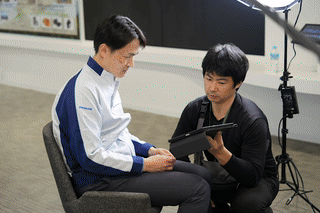JStories ー Japan’s largest telco NTT, Inc. said it has succeeded in an experiment using drones to trigger and guide lightning, marking a world-first achievement. While triggering lightning itself has been done before, NTT's use of drones to control lightning is an entirely new approach. The breakthrough, announced in April 2025, represents a dramatic shift in how countries could defend their cities, people, and critical systems from natural disasters
“When lightning strikes our communications infrastructure, it can shut down entire regional networks,” says Atsushi Nagao, senior researcher at NTT Space Environment and Energy Laboratories.

Facing the damage
As climate change intensifies, lightning strikes are becoming more frequent and destructive across the globe. In Japan alone, annual damage to infrastructure and property is estimated at between ¥100 billion and ¥200 billion. While the lightning rod—developed in the mid-18th century—remains the primary method of protection, even its modern iterations cannot fully prevent damage.
“No matter how many precautions we take, it’s impossible to eliminate the damage completely,” says Nagao. “So we flipped the concept from trying to avoid lightning, to intentionally capturing and safely diverting it.”


Two key technologies
In NTT’s experiment, researchers moved a drone into position under an active thundercloud. The drone is then connected to the ground via a high-voltage switch to trigger a lightning discharge. Two key technologies were developed to make this possible.
NTT engineered a lightning-proof cage to protect the drone from being destroyed by a direct lightning strike. The cage acts as a metallic shield that redirects the current flow away from the core systems. The design also mitigates the intense magnetic fields caused by lightning, allowing the drone to remain stable and operational.

The second breakthrough involves manipulating electric-field intensity to induce a strike. The airborne drone is connected to the ground via a long, conductive wire. A ground-based high-voltage switch is used to change the drone’s surrounding electric field at precisely the right moment—prompting lightning to strike the wire rather than random targets.

While researchers in the past have triggered lightning using rockets or lasers, these efforts were purely experimental and not intended for real-world applications. What makes our work unique," says Nagao, "is that we’re designing this technology for practical use—to protect people and infrastructure. Our goal is to have it operational by around 2030”
But there are challenges: predicting where and when lightning will strike is still a work in progress, and ensuring the system is safe around people requires further development.
Lightning as renewable energy?
In addition to lightning control, NTT is exploring whether lightning can be harnessed as a renewable energy source. “One lightning bolt contains roughly 400 kilowatt-hours, enough to power a family of four for a month,” Nagao explains. “Exactly how much of that energy we can store is still unknown, but we’re working on methods to make it possible.”

NTT’s breakthrough has already attracted attention both domestically and internationally, reflecting the growing interest in this innovative technology. Wind farms, for instance, often suffer lightning damage, but can’t be protected with standard lightning rods due to their location. This drone-based method could be a game-changer.
The same goes for outdoor concerts and sports events. Traditional lightning prevention infrastructure isn’t cost-effective for temporary venues—but with drones, protection can be deployed only when needed.
“We hope this technology will help protect people all over the world from the increasing danger of lightning,” says Nagao.
Translated by Anita De Michele | JStories
Edited by Kwee Chuan Yeo | JStories
Top photo: Envato
For inquiries regarding this article, please contact jstories@pacificbridge.jp
***
Click here for the Japanese version of the article





![[Podcast] Japanese technology to supercharge human fertility (Part 3)](https://storage.googleapis.com/jstories-cms.appspot.com/images/1766558713084place-for-scientific-research-2025-03-07-14-08-49-utc%20(1)_bigthumbnail.jpeg)
![[Interview: Part 2] A digital approach to tackle child hunger in Japan with dignity](https://storage.googleapis.com/jstories-cms.appspot.com/images/1766130666509unnamed_bigthumbnail.jpg)
![[Podcast] Japanese technology to supercharge human fertility (Part 2)](https://storage.googleapis.com/jstories-cms.appspot.com/images/1765863548035unnamed-7_bigthumbnail.jpg)
![[Podcast] Japanese technology to supercharge human fertility (Part 1)](https://storage.googleapis.com/jstories-cms.appspot.com/images/1765440905082unnamed_bigthumbnail.jpg)
_bigthumbnail.jpeg)





![[Interview] When digital and physical worlds meet](https://storage.googleapis.com/jstories-cms.appspot.com/images/1747974430456unnamed-2_smallthumbnail.png)




_smallthumbnail.jpeg)

![[Interview: Part 1] From nourishing souls to feeding the hungry](https://storage.googleapis.com/jstories-cms.appspot.com/images/1763695595492unnamed_smallthumbnail.jpg)

